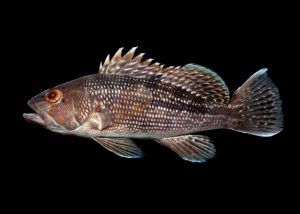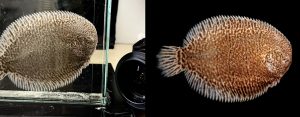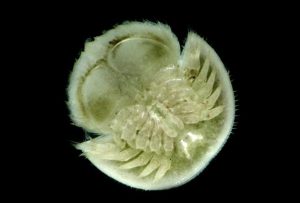by Danielle Meeker, Aquarist & Environmental Educator
A few months ago, The Wetlands Institute (TWI) had the pleasure of hosting Sean McVey, a photographer from North Jersey who specializes in taking detailed pictures of animals against a white or blackback drop. The result are images that capture many animal characteristics often overlooked and underappreciated when only given a quick glance.

This is a juvenile black sea bass. Sean’s photography highlights varied coloration on the sea bass’ face, which is only visible under bright light.
Sean began his journey at the age of 13, photographing insects at New Jersey Audubon’s Scherman Hoffman Wildlife Sanctuary. While in college, his photography interests expanded from insects to fish. Since then Sean has traveled throughout the eastern part of the US, capturing images of over 125 species of fish, crayfish, turtles, snakes, and frogs.
This summer, Sean reached out to TWI in hopes of photographing some of New Jersey’s native species. Over the course of a day, Sean photographed 11 species of fish and three species of invertebrates. To capture these images, Sean brought his own photo tanks, which are small and extremely narrow – the largest measuring only five inches long.

The photography setup in The Wetlands Institute’s Diller Building. Ready to be photographed is a hogchoker, a member of the flatfish family, plus the final result.
We carefully moved the animals into these small tanks, using a small pane of glass to hold the animals in place. For the more irregular shaped animals, like crabs and diamondback terrapin hatchlings, Sean shot them in motion against a black backdrop.

One of the newly hatched horseshoe crabs. Seen here in its trilobite stage, this horseshoe crab is only a few millimeters in size.
Sean will be featuring his photography in an upcoming article in the North American Native Fish Association magazine. Can’t wait that long? Come see these animals in person on your next visit to our Secrets of the Salt Marsh Aquarium!
